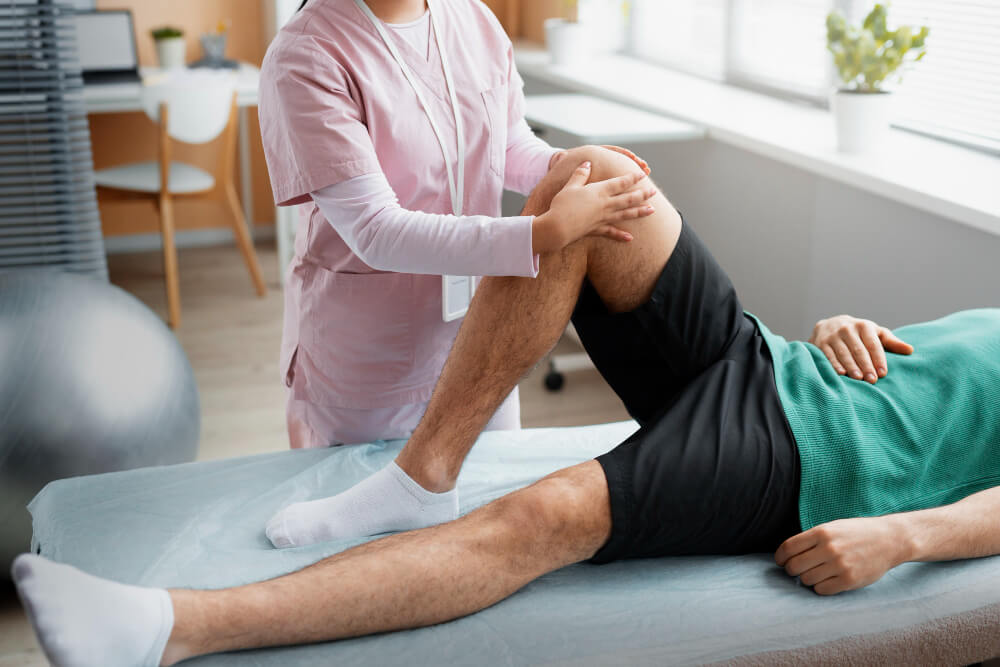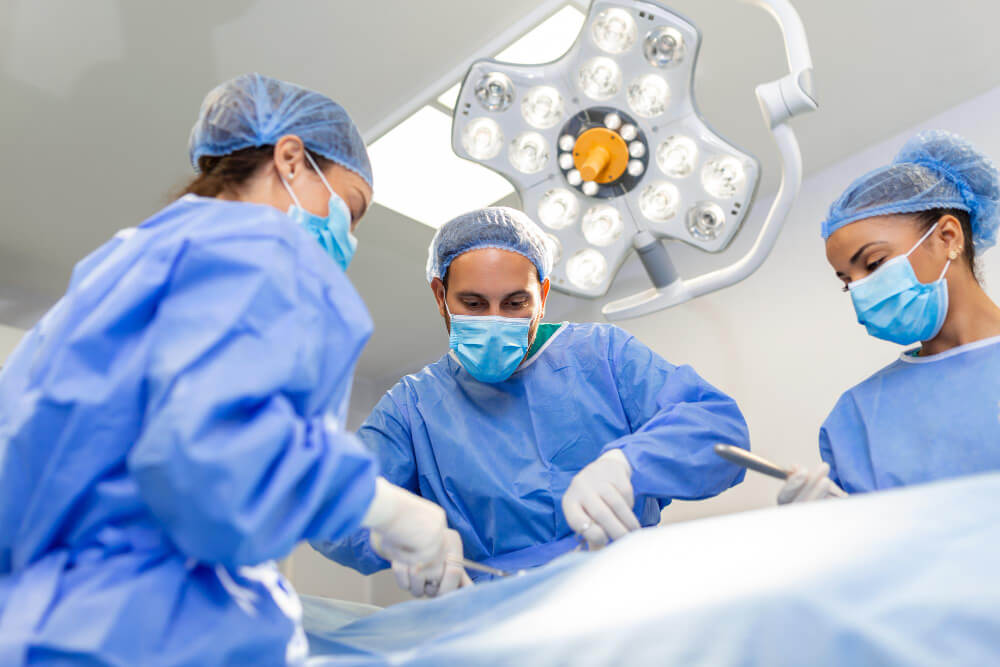Navigating the Signs to Immediate Care and Orthopedic Attention for Your Injury
Our bodies are incredibly resilient, but sometimes, accidents, falls, or overuse can lead to injuries that require immediate medical attention. When it comes to musculoskeletal injuries – those affecting your bones, muscles, joints, ligaments, and tendons – acting quickly can significantly impact your recovery. This is where understanding the critical role of both immediate care and orthopedic care becomes crucial.
This article explores five key signs that indicate you may need immediate care followed by orthopedic attention for a proper diagnosis and treatment plan. We will also delve into the benefits of combining these services and what to expect during the transition from one to the other.
5 Signs You Need to Seek Immediate Care and Orthopedic Follow-Up
Severe Pain and Limited Mobility:
Pain is a natural response to injury, but its severity and impact on movement can signal the need for immediate evaluation. Experiencing sudden, intense pain in your bones, muscles, or joints, especially after a fall, accident, or sports injury, warrants a trip to immediate care. Additionally, if the pain significantly restricts your ability to move a limb or bear weight on it, seeking immediate medical attention is crucial.
Visible Deformity or Swelling:
Sometimes, the injury speaks for itself. Noticeable swelling, bruising, or deformity in an injured limb can be a clear sign of a fracture, dislocation, or major soft tissue damage. Immediate care can provide initial pain management and stabilization, while X-rays or other diagnostic tools can help determine the extent of the injury and the need for further evaluation by an orthopedic specialist.
Suspected Fracture (Even if Minor):
Fractures, or broken bones, can range from hairline cracks to complete breaks. While some minor fractures may not cause extreme pain, it’s important to seek medical attention regardless. Immediate care can provide initial pain relief and stability measures, such as splinting. This is often followed by a referral to an orthopedic specialist for further evaluation, X-rays, or other imaging to determine the best course of treatment, which could involve casting, surgery, or a combination of approaches.
Deep Cuts or Burns Requiring Advanced Care:
Serious cuts or burns that are deep, involve significant blood loss, or cover a large area require immediate medical attention. While minor cuts and scrapes can often be treated at home, deeper injuries often necessitate stitches, wound cleaning, or other interventions that immediate care centers are equipped to provide.
Signs of Infection:
Even if you received initial care for your injury, be aware of potential signs of infection that might develop later. These can include increased pain, redness, swelling, warmth around the injury site, fever, or chills. If you experience any of these symptoms, don’t hesitate to seek immediate medical attention again. Early diagnosis and treatment of infection are crucial to prevent complications and promote proper healing.
Benefits of Combining Immediate and Orthopedic Care
A seamless transition between immediate care and orthopedic care offers several significant benefits for your injury recovery:
- Faster Diagnosis and Treatment: Immediate care can provide a prompt initial diagnosis and treatment, minimizing the wait time for specialized orthopedic care. This can be particularly beneficial for managing pain and swelling in the early stages of the injury.
- Reduced Pain and Swelling: Early intervention by an immediate care provider can help control pain and swelling, promoting a smoother healing process and facilitating a more accurate orthopedic evaluation.
- Improved Outcomes: Combining immediate care with follow-up orthopedic care can lead to better long-term outcomes for your injury. A comprehensive treatment plan developed by an orthopedic specialist, often informed by the initial assessment at the immediate care center, can significantly improve your recovery and minimize the risk of complications.
- Reduced Healthcare Costs: Addressing your injury promptly at an immediate care center can potentially prevent the need for a more expensive emergency room visit. Furthermore, early treatment can help prevent complications and the need for more extensive interventions later, leading to overall cost savings.
A Seamless Transition: From Immediate Care to Orthopedics
Navigating the healthcare system can feel overwhelming, especially after an injury. However, the transition from immediate care to orthopedic care is typically straightforward. Here’s what you can expect:
What to Expect at the Immediate Care Center:
- Evaluation: The healthcare professional will assess your symptoms, medical history, and perform a physical examination.
- Diagnosis: Based on their evaluation, they will diagnose your injury and determine the appropriate course of treatment.
- Initial Treatment: They may provide pain medication, ice or heat therapy, splinting, or other necessary immediate interventions.
- Referral to Orthopedics: If your injury requires further evaluation or specialized treatment, the immediate care provider will refer you to an orthopedic specialist. This referral will often include any initial assessments and diagnostic test results obtained
Following Up with Orthopedics
After your visit to immediate care, if the healthcare professional recommends an orthopedic specialist, here’s what to expect during the follow-up:
- Consultation: The orthopedic surgeon will review your medical history, X-rays, or other diagnostic images from the immediate care center. They may also ask additional questions about your injury and symptoms.
- Treatment Plan: Based on the information gathered, the orthopedic surgeon will discuss your treatment options. This could include:
- Non-surgical treatments: Options like physical therapy, medication, injections, or bracing. The immediate care provider may have already initiated some of these interventions, which the orthopedic surgeon can continue or modify based on their assessment.
- Surgery: If necessary, the surgeon will discuss the type of surgery required and explain the risks and benefits.
- Long-Term Care: The orthopedic surgeon will oversee your recovery, providing ongoing care and monitoring your progress. This may involve follow-up appointments, physical therapy sessions, and medication adjustments as needed.
Additional Considerations
Preparation for Your Appointments:
- Gather Information: Before your appointments, gather any relevant medical records, insurance information, and a list of your current medications and allergies.
- Write Down Questions: Prepare a list of questions you have for both the immediate care provider and the orthopedic surgeon. This may include questions about your diagnosis, treatment options, recovery timeline, and potential limitations.
- Wear Comfortable Clothing: For both appointments, wear comfortable clothing that allows easy access to the injured area.
Recovery and Rehabilitation:
- Follow Instructions: Following the treatment plan set by the immediate care provider and orthopedic surgeon is crucial for optimal healing.
- Physical Therapy: Physical therapy plays a vital role in regaining strength, mobility, and function after an injury. The immediate care provider or orthopedic surgeon may recommend a physical therapy program tailored to your specific needs.
- Pain Management: Managing pain is important throughout the recovery process. The healthcare professionals can provide guidance on pain medication, alternative pain management techniques, and self-care strategies.
- Patience is Key: Recovery takes time. Be patient with yourself and follow the recommended course of treatment to achieve the best possible outcome.
Conclusion
By understanding the signs that require immediate care and the benefits of combined orthopedic care, you can take proactive steps towards a successful recovery. Remember, acting promptly after an injury can significantly impact the healing process. Don’t hesitate to seek medical attention if you experience any of the concerning signs mentioned above. By working collaboratively with immediate care providers and orthopedic specialists, you can ensure a faster, more effective path to healing and getting back to the activities you enjoy.


